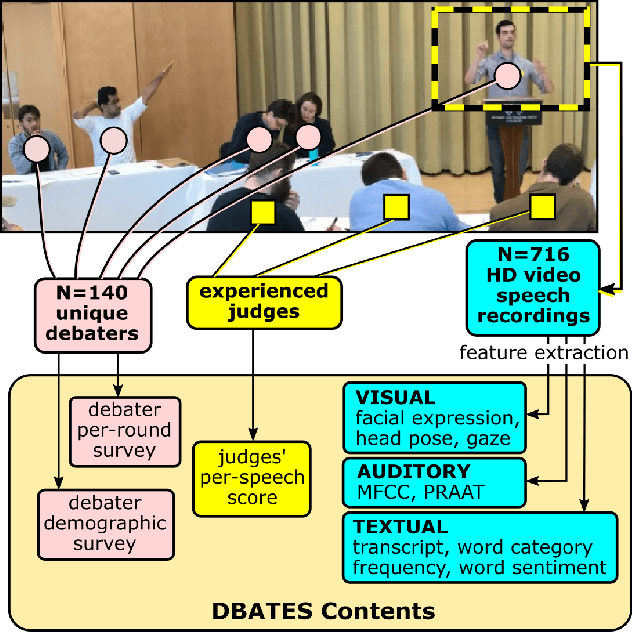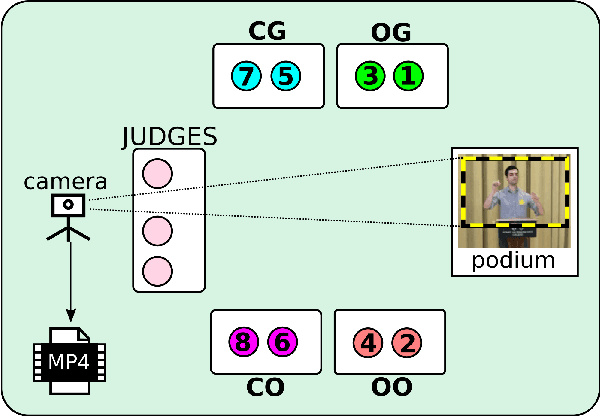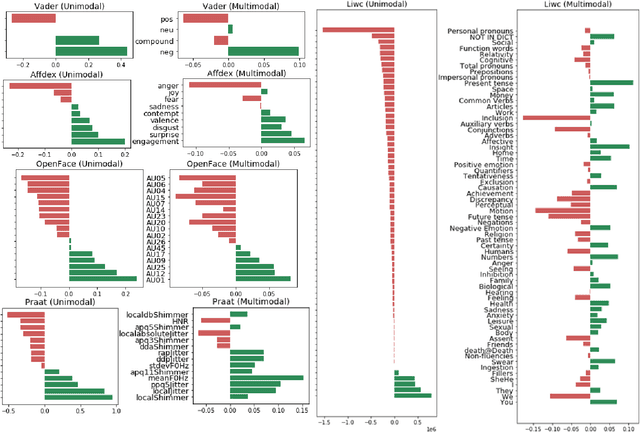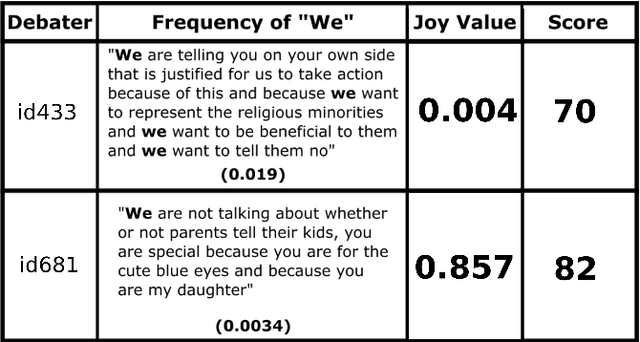Raiyan Abdul Baten
MuseRAG: Idea Originality Scoring At Scale
May 22, 2025Abstract:An objective, face-valid way to assess the originality of creative ideas is to measure how rare each idea is within a population -- an approach long used in creativity research but difficult to automate at scale. Tabulating response frequencies via manual bucketing of idea rephrasings is labor-intensive, error-prone, and brittle under large corpora. We introduce a fully automated, psychometrically validated pipeline for frequency-based originality scoring. Our method, MuseRAG, combines large language models (LLMs) with an externally orchestrated retrieval-augmented generation (RAG) framework. Given a new idea, the system retrieves semantically similar prior idea buckets and zero-shot prompts the LLM to judge whether the new idea belongs to an existing bucket or forms a new one. The resulting buckets enable computation of frequency-based originality metrics. Across five datasets (N=1143, n_ideas=16294), MuseRAG matches human annotators in idea clustering structure and resolution (AMI = 0.59) and in participant-level scoring (r = 0.89) -- while exhibiting strong convergent and external validity. Our work enables intent-sensitive, human-aligned originality scoring at scale to aid creativity research.
AI Can Enhance Creativity in Social Networks
Oct 20, 2024



Abstract:Can peer recommendation engines elevate people's creative performances in self-organizing social networks? Answering this question requires resolving challenges in data collection (e.g., tracing inspiration links and psycho-social attributes of nodes) and intervention design (e.g., balancing idea stimulation and redundancy in evolving information environments). We trained a model that predicts people's ideation performances using semantic and network-structural features in an online platform. Using this model, we built SocialMuse, which maximizes people's predicted performances to generate peer recommendations for them. We found treatment networks leveraging SocialMuse outperforming AI-agnostic control networks in several creativity measures. The treatment networks were more decentralized than the control, as SocialMuse increasingly emphasized network-structural features at large network sizes. This decentralization spreads people's inspiration sources, helping inspired ideas stand out better. Our study provides actionable insights into building intelligent systems for elevating creativity.
NADBenchmarks -- a compilation of Benchmark Datasets for Machine Learning Tasks related to Natural Disasters
Dec 21, 2022Abstract:Climate change has increased the intensity, frequency, and duration of extreme weather events and natural disasters across the world. While the increased data on natural disasters improves the scope of machine learning (ML) in this field, progress is relatively slow. One bottleneck is the lack of benchmark datasets that would allow ML researchers to quantify their progress against a standard metric. The objective of this short paper is to explore the state of benchmark datasets for ML tasks related to natural disasters, categorizing them according to the disaster management cycle. We compile a list of existing benchmark datasets introduced in the past five years. We propose a web platform - NADBenchmarks - where researchers can search for benchmark datasets for natural disasters, and we develop a preliminary version of such a platform using our compiled list. This paper is intended to aid researchers in finding benchmark datasets to train their ML models on, and provide general directions for topics where they can contribute new benchmark datasets.
DBATES: DataBase of Audio features, Text, and visual Expressions in competitive debate Speeches
Mar 26, 2021



Abstract:In this work, we present a database of multimodal communication features extracted from debate speeches in the 2019 North American Universities Debate Championships (NAUDC). Feature sets were extracted from the visual (facial expression, gaze, and head pose), audio (PRAAT), and textual (word sentiment and linguistic category) modalities of raw video recordings of competitive collegiate debaters (N=717 6-minute recordings from 140 unique debaters). Each speech has an associated competition debate score (range: 67-96) from expert judges as well as competitor demographic and per-round reflection surveys. We observe the fully multimodal model performs best in comparison to models trained on various compositions of modalities. We also find that the weights of some features (such as the expression of joy and the use of the word we) change in direction between the aforementioned models. We use these results to highlight the value of a multimodal dataset for studying competitive, collegiate debate.
 Add to Chrome
Add to Chrome Add to Firefox
Add to Firefox Add to Edge
Add to Edge